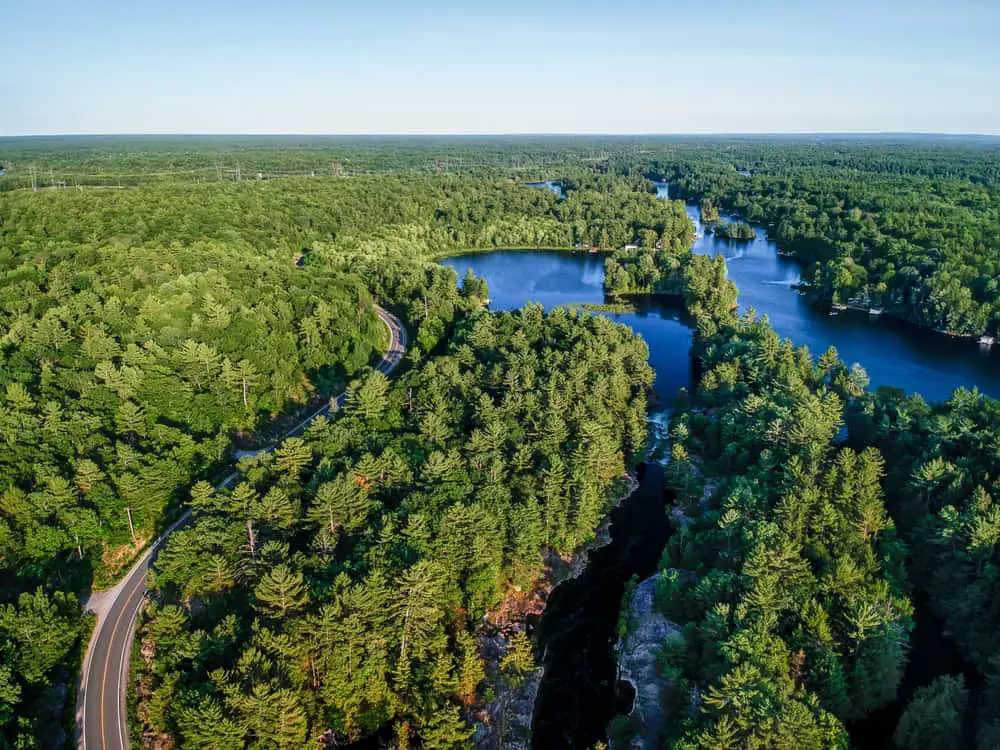
Canada’s forests are beautiful and cover a large amount of landmass throughout this country. Some of the most diversified forests can be found in Ontario. This Canadian province features four distinct forest types that provide natural habitat to various plants, mammals, and birds.
Many tree species are found throughout Canada, offering both coniferous and deciduous tree species throughout Ontario.
Table of Contents
Types of Forest in Ontario
Ontario is a province in Canada that is known for its rich and dense forests. This area has several varied landscapes that are home to countless species of plants, birds, and mammals.
Throughout Ontario, there are four distinct forest types: the Lowlands near Hudson Bay, the boreal forest in northern Ontario, the Great Lakes region with the Lawrence forest, and the deciduous forests in southern Ontario that are known as the Carolinian forest.
Below, let’s take a closer look at these four different forest types to understand better what makes them unique and special.
Lowlands

The Hudson Bay Lowlands are located in the far northern reaches of Ontario. This area is the largest parcel of the wetland area globally, making it home to a diverse and intricate ecosystem. This area has several thousand small ponds and lakes and is populated with countless trees.
The entire Lowland wetland area makes up 26 million hectares. Typical trees found in this region include the white birch and the dwarf birch. The arctic fox, arctic hare, polar bear, and woodland caribou call this part of the world home.
Boreal Forest
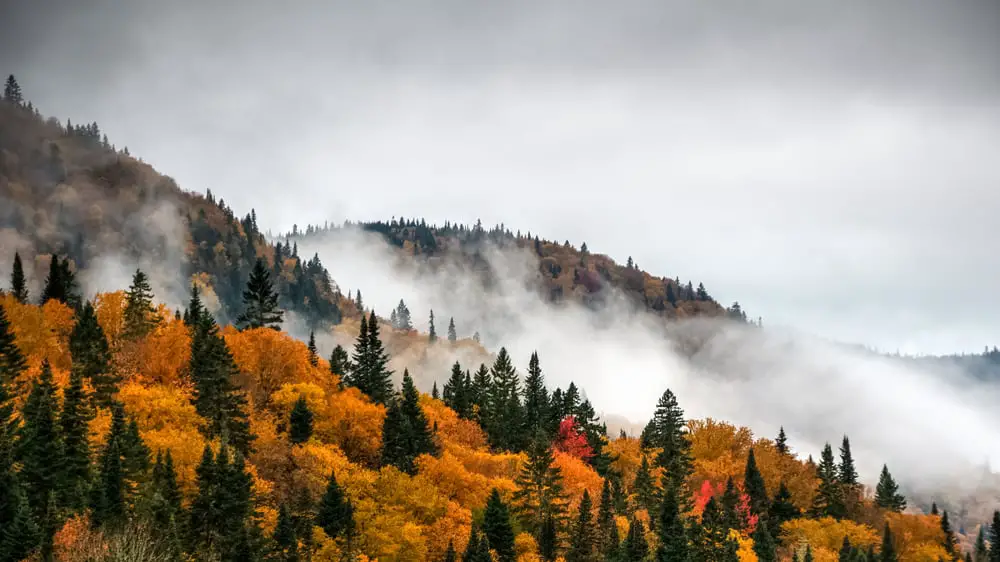
In northern Ontario, there is a rich boreal forest. This type of forest is the most populous forest in the world and is commonly found throughout Canada, Alaska, and Russia. Canada’s boreal forest is known for its mostly coniferous trees, which are strong and durable, even in the harsh winters.
These types of trees have needles instead of leaves and can survive cold temperatures or long periods of drought. The needles stay green for the entire year and get cones rather than flowers. Many coniferous tree species are found in the famous boreal forest, including cedars, fir, black spruce trees, and pine trees.
Several animals also call the boreal forest home, and countless birds are only found in this part of the world, including the great owl and winter wren. Many mammal species live in the boreal forest region, such as the black bear, lynx, hare, and fox.
Great Lakes
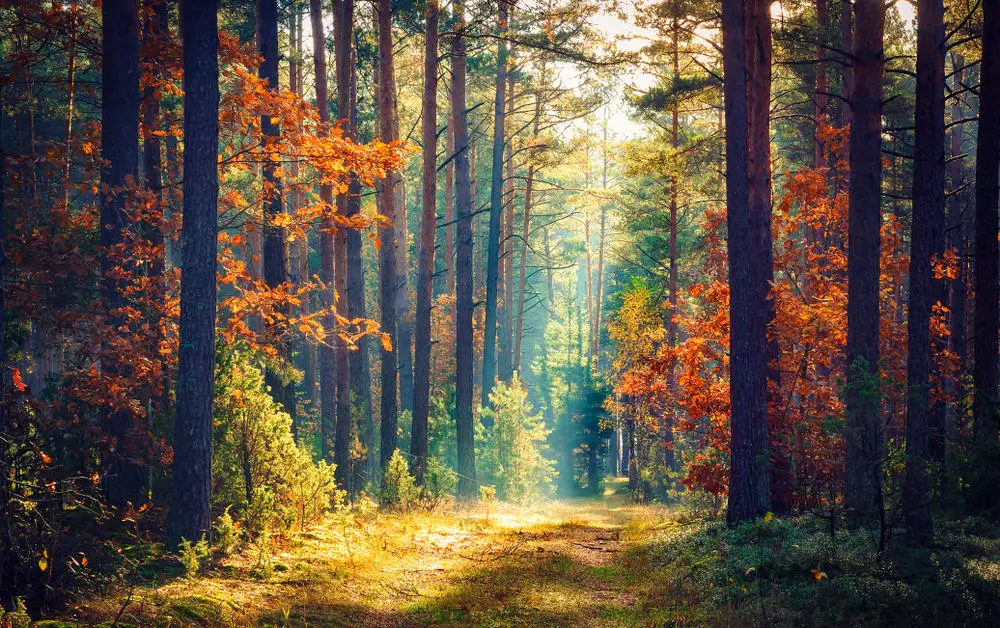
Around the Great Lakes area in southern and central Ontario, visitors will find the Lawrence forest. Different from the northern reaches of Ontario, this particular forest has mostly hardwood, deciduous trees. The more southern location offers a milder climate where trees like oak, maple, yellow birch, and white pine can thrive.
Several coniferous trees are dotting the area as well, including hemlocks, pines, and cedars. The exciting thing about this forest is there is a range of trees of varying ages. While some trees border on old-growth or ancient trees, other trees in the area are young.
The different tree ages show that this is a healthy forest. This type of mixed forest makes up 20% of Ontario’s total forested area. The forest is home to many migratory birds like pileated woodpeckers. Predatory animals such as bears and wolves also call this type of forest home.
Deciduous Forest
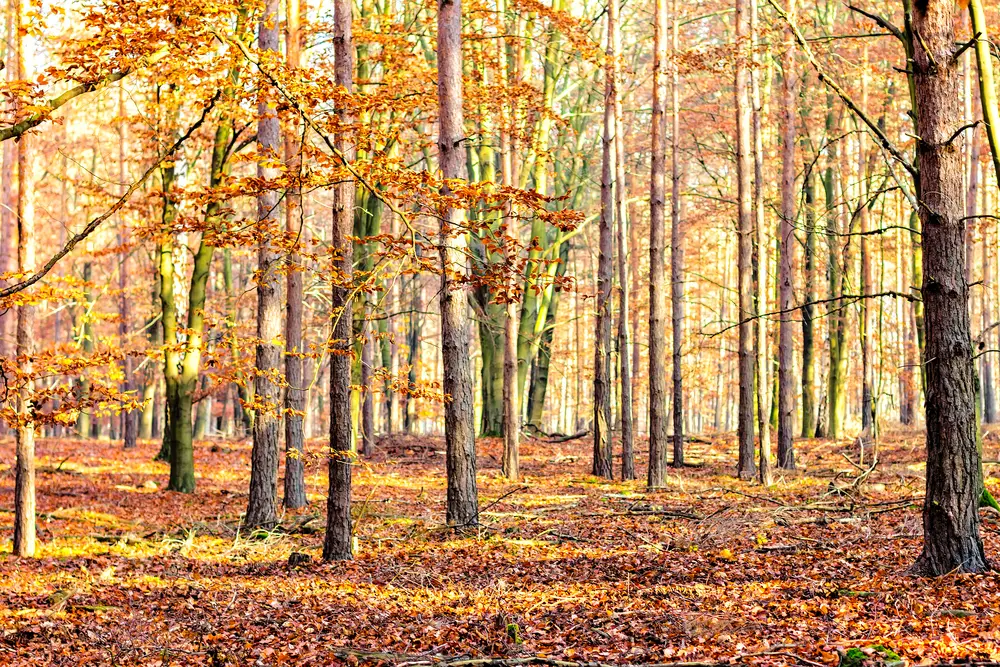
In the southernmost part of Ontario, you will find the deciduous forest. Visitors can discover this forest type between the shore of Lake Huron and the northern parts of Ontario and Lake Erie. This type of forest features broadleaf trees that will lose their leaves each season.
Although a deciduous tree will shed its leaves annually, many of the trees will not shed at the same time of year, maintaining a thick canopy of leaves in the forest. Common trees in this area include red maple, oaks, and black walnut trees. Visitors will also find aspens, elms, sugar maple, eastern hemlock, beeches, red pine, and yellow birch.
In the summer, it is not uncommon to find flowering shrubs or plants closer to the edges of the forest where there is better light. Although this type of forest is commonly found further south in the United States, only 3% of Canada’s forested area is dedicated to deciduous forest.
Carolinian Forest
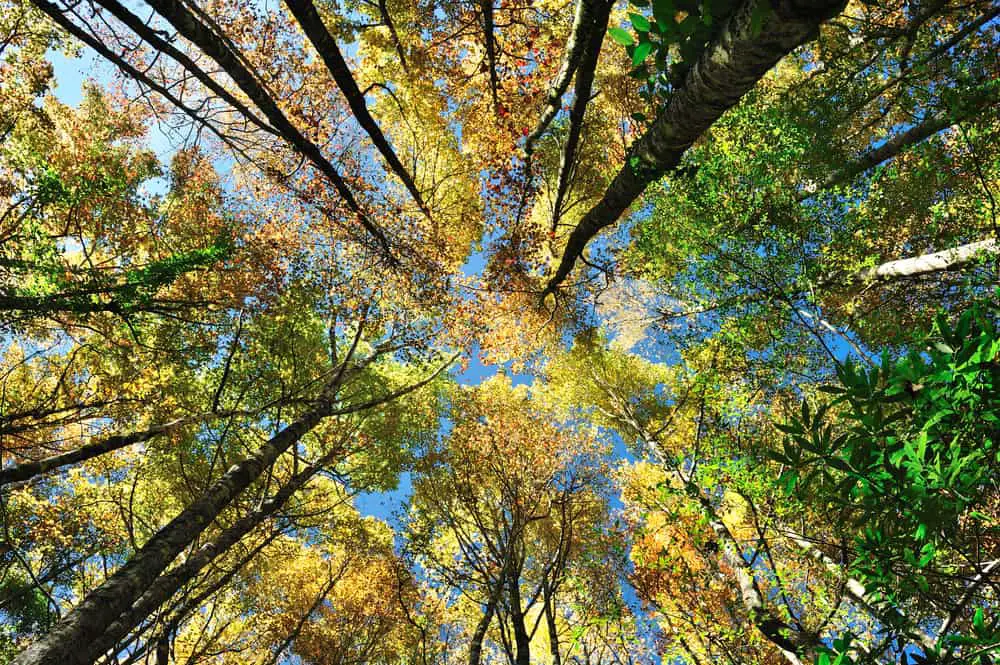
Sometimes, the deciduous forest area is referred to as the Carolinian forest. This terminology simply names the area of deciduous forest located within Ontario. There are over 500 species within this swatch of deciduous wildlife habitat growth that is considered rare.
Although this is a protected and beautiful area, the land is largely under attack due to logging and invasive farmland and vineyards. The natural resources found in this area are highly valuable. What used to include 80% forest cover in this area has shrunk to only 11% forest coverage in the past 100 years.
Forest management has been working diligently for years to protect and reverse the impact of logging and farming in the area.
FAQs
Understanding the various forest types throughout Ontario can be confusing, especially for those unfamiliar with Ontario’s location and geography. Below, we have put together some commonly asked questions related to Ontario’s forests so you can better understand the forest region within this area.
How many forests are in Ontario?
Ontario has four major types of forests within this Canadian province. Each forest type is unique and different and contains its own ecozone with plants and animals specific to its region.
What are the different types of forests in Ontario?
There are four major forest types throughout Ontario, each with unique species of trees and animals. The four major forests include the Lowland area, boreal forest, Lawrence forest, and deciduous forest, also sometimes referred to as the Carolinian forest.
The northern Ontario area tends to see more coniferous tree types, while southern Ontario is home to mixed coniferous forests or deciduous forests. These areas are all classified differently due to their elevation and plant life.
What are the best places for forests in Ontario?
Finding the best forests in Ontario really depends on the type of forest you like. If you want to visit a boreal, coniferous forest, visiting northern Ontario parts will be the best place for you to travel. If you are more interested in the small but fascinating Ontario deciduous forest, then southern Ontario may be a better option for your travels.
What animal species are found in Ontario?
Because Ontario covers such a large and diverse region, several different animal species are found in this forest region. Large mammals including elk, polar bears, wolves, and caribou call Ontario home. Smaller mammals such as squirrels, hares, and foxes can also be found in the various forest regions.
The wetlands are homes to aquatic and amphibious animals like the gray tree frog and the rat snake. Countless birds live in Ontario, offering a range of beautiful sights for birders. Species range from threatened or endangered birds that can only be found in Ontario, such as the Golden Eagle and Barn Owl, to migratory birds and leave season after season.
